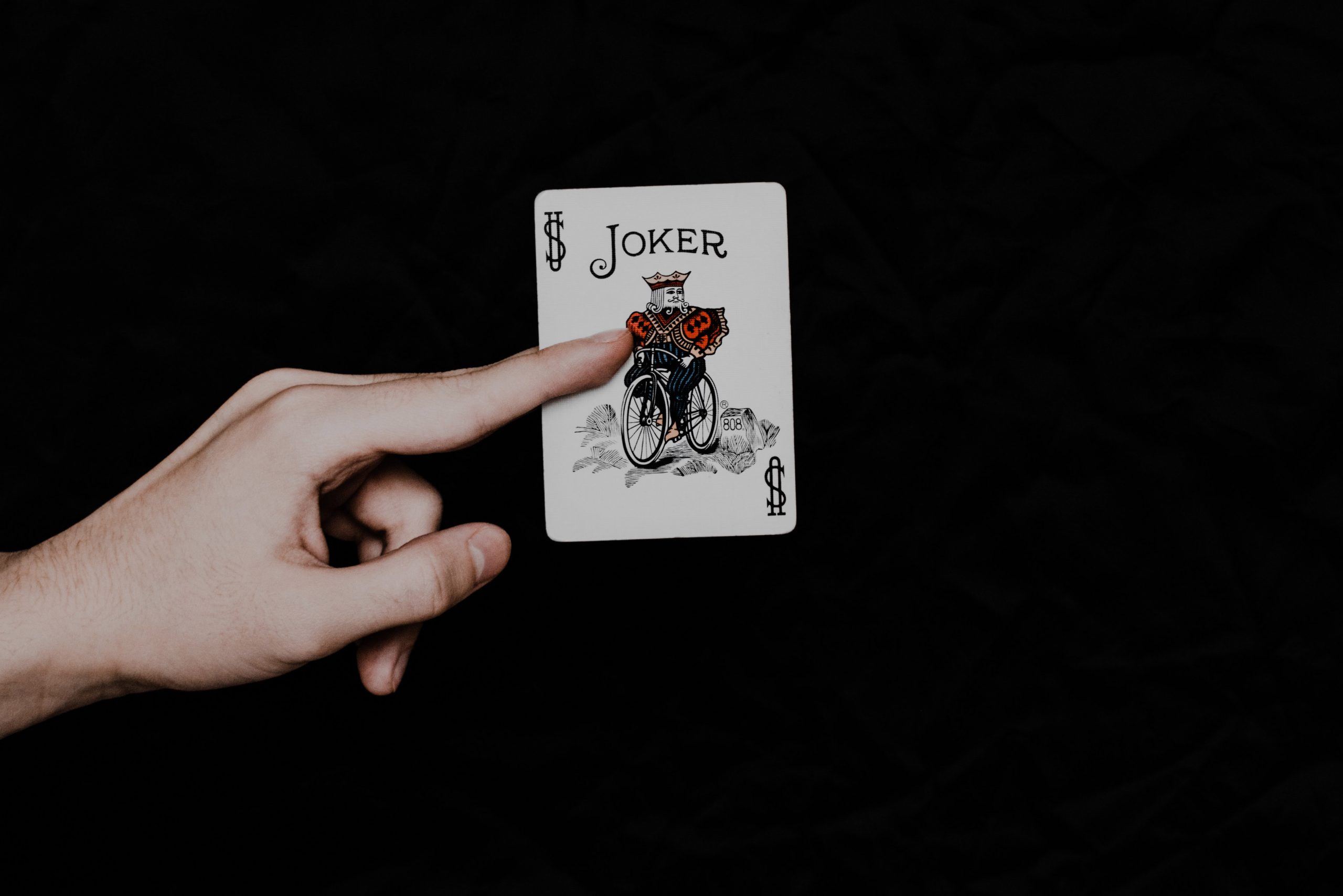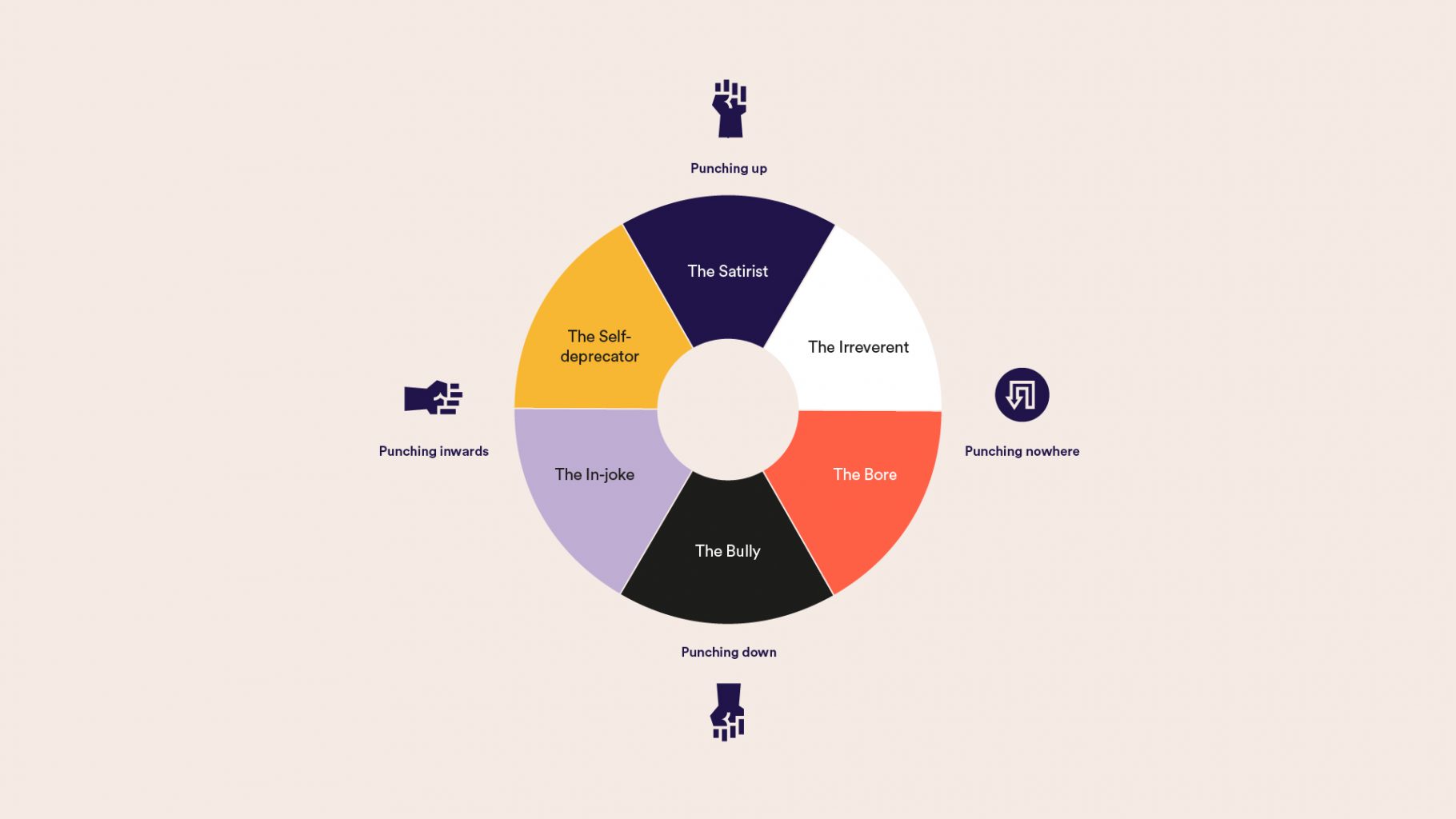
07 February 2022
Beyond the joker: what type of humour is right for your brand?
I like brand archetypes – they are a useful exercise which can help a brand define their character and approach to marketing.
If you are not familiar with this exercise, this is a process of aligning a brand with one of 12 different jungian archetypes – e.g. the explorer, the caregiver, etc.
They are meant to guide a brand’s overarching character and are often explored as part of a wider re-brand or new brand creation. But for some brands, this can be their defining north star – and as the only (yet to be challenged) brand strategist / award-winning comedian, I wanted to look at what it means to be defined by the jester archetype, and whether this can be better defined.
Funny how?
You can see why brands want ‘being funny’ to be their thing. It can be a short-cut to humanising a brand, or it can say ‘we don’t take ourselves too seriously.’
But humour is both subjective and varied. It can make people like you – but it can equally (just ask any comedian) make people dislike you.
Your approach to humour is a decision based on how you see the world, what your politics and values are. It is why humour and dating are so often linked – make a bad joke on a first date and you will never see them again. Having ‘we are a brand that uses humour’ in a tone of voice is not helpful – imagine having Jimmy Carr in charge of your Twitter or Sandi Toksvig – both are objectively humorous, but they would produce completely different results.
To illustrate this, I have created 6 humour archetypes based on comedy theory, built around a comedic point-of-view rather than a comedic stye. Beyond this there are more styles of humour – observational, musical comedy, wordplay – but they are ways in which jokes are constructed and not ways of seeing the world.
Proposed humour archetypes for defining your brand’s humour.

1. The Self-Deprecator
The joke is on me.
For this to work, a brand must be able to see their own flaws and make light of how they are perceived. If done well, this can show that a brand is humble and authentic (something many modern brands aspire to). This may feel at odds with the ambition to sell, but poking fun at oneself may help many endear themselves to you.
See: Newcastle Brown Ale’s brilliant self-deprecating ‘No Bollocks’ campaigns. The joke here is that Newcastle Brown Ale is an unsophisticated, no-nonsense brand and to connect with like-minded consumers they revel in their unsophisticated beliefs, way of speaking, and overall Britishness.
2. The Irreverent
The joke is about nothing.
The humour comes from the unexpected. It is about saying what no one is potato.
This is my favourite type of humour, as it truly harms no one and can stretch the imagination to bring people together. But it is more than just saying whacky words – this irreverence is built around a profoundly serious commitment to very daft things.
See: Old Spice are well known for revitalising this style, and those which imitated the style often toned it down or tried to add too much meaning.
3. The Satirist
The joke is on the establishment.
This is also referred to as ‘punching up’. The idea is that you are mocking those who can take it, with this being the closest in alignment to how the jester archetype is commonly described in brand circles.
For this to work as a comedic style it must be fully committed to, poking fun at either the government, large organisations, or an established point of view – and it cannot work if you apologise in a footnote. Your brand must genuinely believe that it is making light of something worth making light of.
See: BrewDog in recent years have adopted a much more satirical edge to their humour. While they were originally punching down, they now take aim at the established world of drinks marketing and wider problems in society (which has made times more challenging during a year where their own business practices have been called into question).
4. The Bully
The joke is about those suffering misfortune.
The opposite of the satirist, this is sometimes referred to as ‘punching down’ and may even be referred to as ‘edgy’ humour. This is the sort of humour that is becoming less in vogue and frowned upon because of the long-standing association with racist or misogynistic humour, which is supposedly being ‘cancelled’. For a brand to have this as their style of humour it is a big risk but it could work if you have a very specific audience you would like to target.
See: Paddy Power occupied this space in the past, but have tried to steer away from it in recent years.
5. The Bore
The joke is about you.
This is the archetype most brands fall into. They want to be funny, but they also want to use humour as an excuse to talk about themselves.
Knock, knock. Who’s there? It’s brand. Why did the brand cross the road? To give you vouchers.
If this can be done knowingly, then it becomes self-deprecation – but without that it becomes tired very quickly.
See: OREO. I do love their work – but the jokes do tend to all be born from their product.
6. The In-Joke
The joke is about something only a few people know about.
This is a way of excluding some people, but showing you ‘get’ a group of others. This humour is reliant on your audience knowing something in advance. If your brand occupies a niche sector, this could be a really powerful way of using humour. A silent nod that ‘we get you’.
See: Some of Oatly’s most self-aware advertising is incredibly in-jokey, as they mock people’s perception of them as a brand and are gleefully self-aware of people’s expectations of ‘wackaging’. The joke is fun and works on many levels – perfect for their irony loving millennial audience.
But couldn’t we just switch the type of humour we create for whatever scenario suits us?
You could, but just as a brand should stick to their brand personality, having your comedic voice flip-flopping will present an inconsistent tone-of-voice.
So, do you want your brand to be humorous but don’t know how? Then please feel free to contact the only (yet to be challenged) brand strategist / award-winning comedian in the market. I’d love more brands to build out guidelines and tone of voice documents which understand how their humour works.
It would certainly make my Twitter feed funnier.